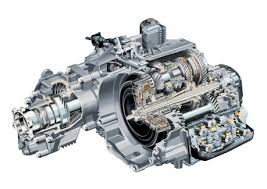Mobile:+86-311-808-126-83
Email:info@ydcastings.com
Exploring the Process and Benefits of Casting Aluminum for Various Applications
Casting Aluminum A Comprehensive Overview
Casting aluminum is a vital process in manufacturing that has significant implications in various industries, including automotive, aerospace, and consumer goods. This technique involves pouring molten aluminum into molds to create a wide array of shapes and components. Due to its lightweight, high strength, good corrosion resistance, and excellent thermal conductivity, aluminum has become an increasingly popular choice for many applications.
The Basics of Aluminum Casting
Aluminum casting is generally classified into several types, including sand casting, die casting, and permanent mold casting. Each method has its unique advantages and is selected based on the specific requirements of the application.
1. Sand Casting
Sand casting is one of the oldest and most versatile casting methods. It involves creating a mold from a mixture of sand, clay, and water. The sand is packed around a pattern, which is then removed to leave a hollow cavity in the shape of the desired part. Molten aluminum is poured into this cavity, allowed to cool, and then the mold is broken away to reveal the final product. Sand casting is particularly suited for producing large components and allows for complex geometries, making it a preferred choice in heavy machinery and automotive parts.
2. Die Casting
Die casting is a method that involves forcing molten aluminum under high pressure into a reusable steel mold (die). This process results in high-dimensional accuracy and excellent surface finish, which makes die casting ideal for producing large volumes of small to medium-sized parts, such as engine blocks, transmission housings, and electronic enclosures. Die casting can be performed using two main techniques hot chamber and cold chamber, depending on the melting temperature of the alloy and the complexity of the part.
In permanent mold casting, a mold made of metal is used to produce parts. The process is similar to die casting but utilizes gravity instead of high pressure to fill the mold with aluminum. This method is often used for parts that require better mechanical properties and lower porosity than sand or die-cast components can achieve. Permanent mold casting balances the benefits of sand and die casting, particularly for medium-to-high production volumes.
casting aluminum

Advantages of Casting Aluminum
The casting of aluminum offers numerous benefits, making it a favored choice among manufacturers. Firstly, aluminum’s lightweight nature allows for the production of components that reduce overall weight, which is especially beneficial in automotive and aerospace applications where fuel efficiency is critical.
Secondly, aluminum exhibits excellent corrosion resistance due to the natural formation of a protective oxide layer. This characteristic makes aluminum castings suitable for various environments without the need for additional surface treatments.
Moreover, aluminum can be easily recycled without losing its properties, making casting aluminum an environmentally friendly choice, appealing to a wide range of industries that are increasingly focused on sustainability.
Challenges in Aluminum Casting
Despite its many advantages, aluminum casting is not without challenges. One of the primary issues is the formation of defects, such as porosity, shrinkage, and inclusion, which can compromise the integrity of the final product. Controlling the casting process parameters, such as temperature and cooling rates, is crucial to mitigate these issues.
Additionally, the cost of tooling, particularly for die casting, can be high. This makes the initial investment substantial, although it may be offset by the overall savings in production for high-volume runs.
Conclusion
In summary, casting aluminum is a versatile and effective manufacturing process favored in various industries because of aluminum’s beneficial properties. Whether through sand casting, die casting, or permanent mold casting, manufacturers can create a diverse range of components that meet high standards of quality and performance. As technology continues to evolve, innovations in casting techniques and materials will likely enhance the efficiency and effectiveness of aluminum casting, further solidifying its position in modern manufacturing. As we move towards a more sustainable future, the recyclability and lightweight nature of aluminum will ensure its critical role in both existing and emerging markets.
-
Impeller Technology That Powers Precision in Pump SystemsNewsMay.22,2025
-
Valve Durability Begins with Quality Cast Iron ComponentsNewsMay.22,2025
-
Performance Cooling with Advanced Automobile Water Pump SolutionsNewsMay.22,2025
-
How Motor Housing and Oil Pans Shape Engine PerformanceNewsMay.22,2025
-
How Metal Castings Drive Modern Manufacturing EfficiencyNewsMay.22,2025
-
Exploring the Engineering Behind Valve Body CastingsNewsMay.22,2025











